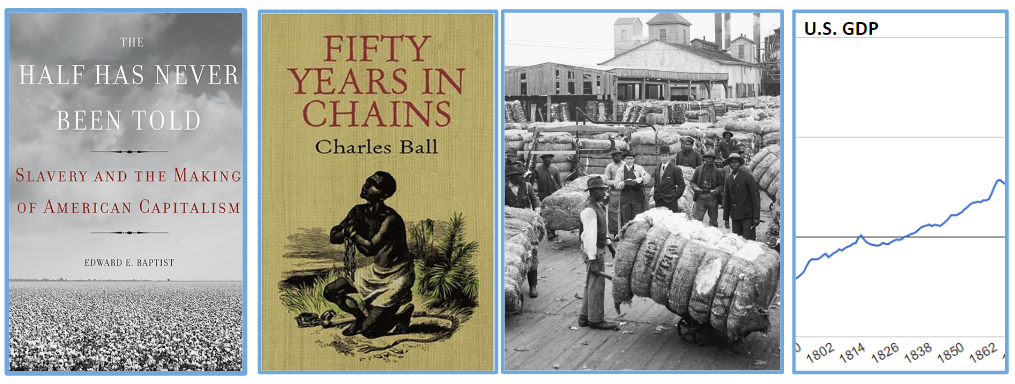TOPIC 4.5 The Market Revolution
the Market revolution & the Technology of torture
Unit 4: Learning Objective E - Explain the causes and effects of the innovations in technology, agriculture, and commerce over time.
Objective 1: Students will identify a claim from a secondary source
Objective 2: Students will be able to explain the central role that torture of enslaved people and the break up of black families played in America’s economic modernization and Market Revolution
This Key COncept in an ANTIracist classroom:
“Increased cotton production was the fuel of the Industrial Revolution…and every cotton labor camp carved out of the Southwestern woods used torture by whipping as it central technology..” - Dr. Edward Baptist
American textbooks have traditionally failed to describe the central role that chattel slavery played in the rise of American economic power. Slavery cannot be regulated to a small corner of our description of the 19th century. The Industrial Revolution made the modern world, and it would have been impossible without cheap cotton. Cheap cotton was produced by breaking up families, selling children from their parents, and through the torture of enslaved inhabitants of labor camps.
Notes
Like many APUSH classrooms, my students enjoy the Shark Tank activity during Unit 4. Students stand in front of their classmates as Robert Fulton, Samuel McCormick, etc. and make the case for their grand ideas and inventions. After declaring a “winner,” I have my class discuss a thesis for this prompt: “Evaluate the extent that creativity and innovative technologies fueled the Market Revolution.” It’s a great recap for the lesson and it covers the textbook material in a fun and thorough manner. I keep the thesis on the board for the next class period. However, that lesson does not cover the full story of how slavery was central to the making of the modern American economy. I would argue that Dr. Edward Baptist’s work on the economics of slavery is one of the most important secondary sources for understanding the development of the United States.
The book does an excellent job of tying the stories of individual enslaved persons into the broader context of the Market Revolution. I assign this short reading (it will take the students 10-15 mins to read) for homework. In class the next day, we open with discussion on Baptist’s text and then modify our thesis from the previous day.
I realize every APUSH teacher has their own “must read” secondary source recommendation and it’s not possible to fit all of them into the curriculum. Therefore, you can use the slides presentation which summarizes Dr. Baptist’s thesis in just a few minutes of class time.

